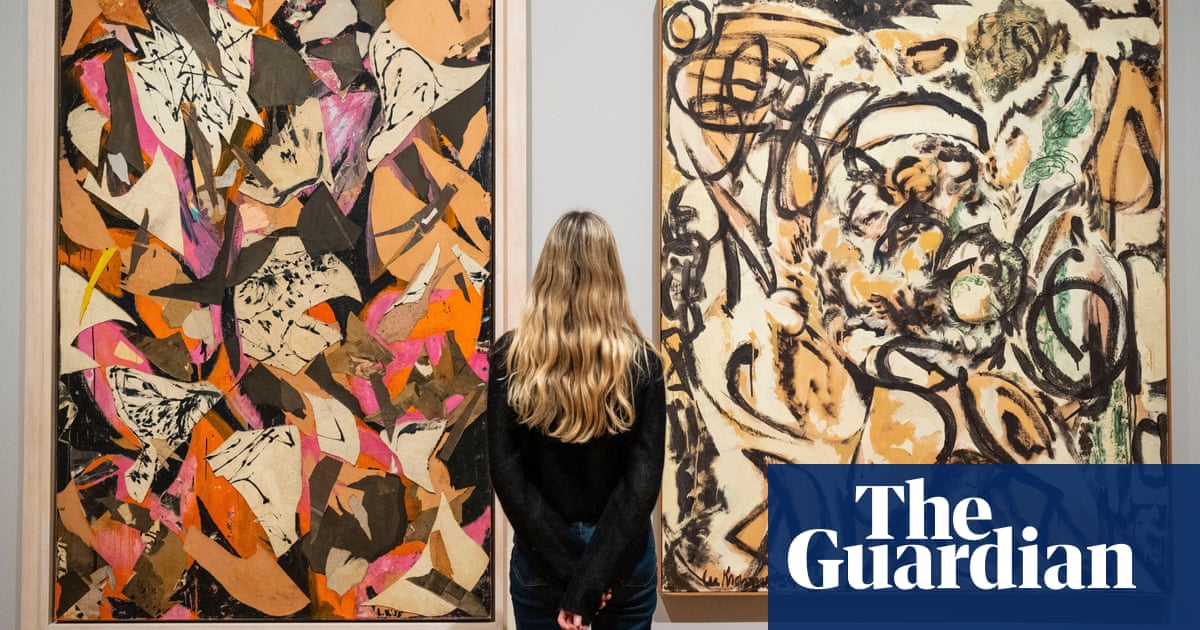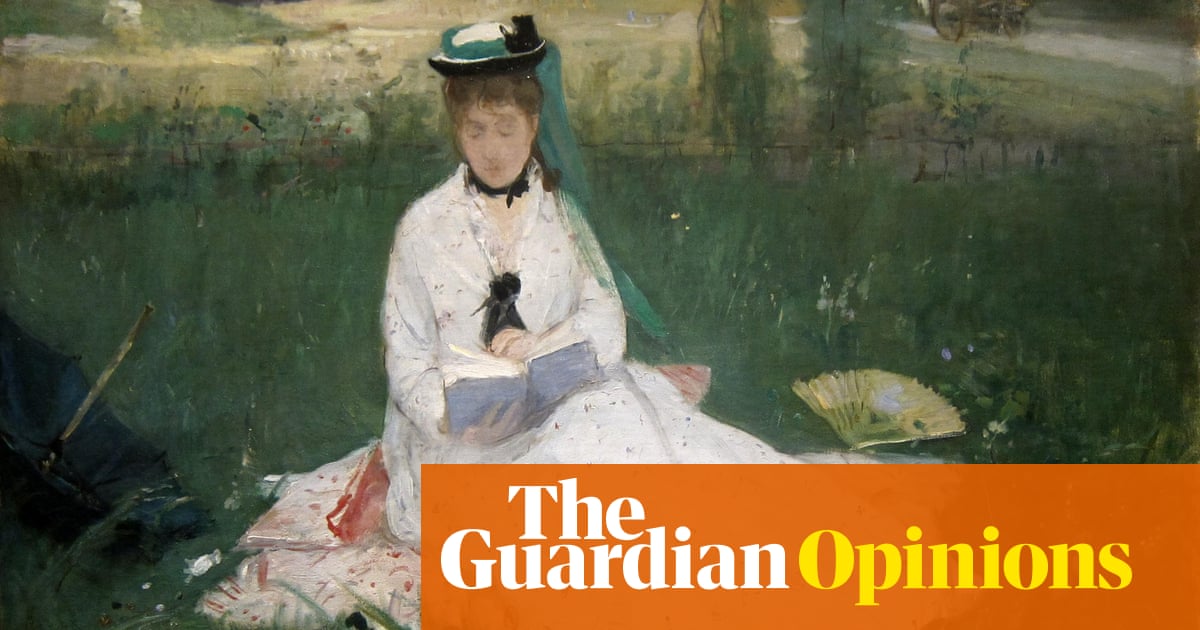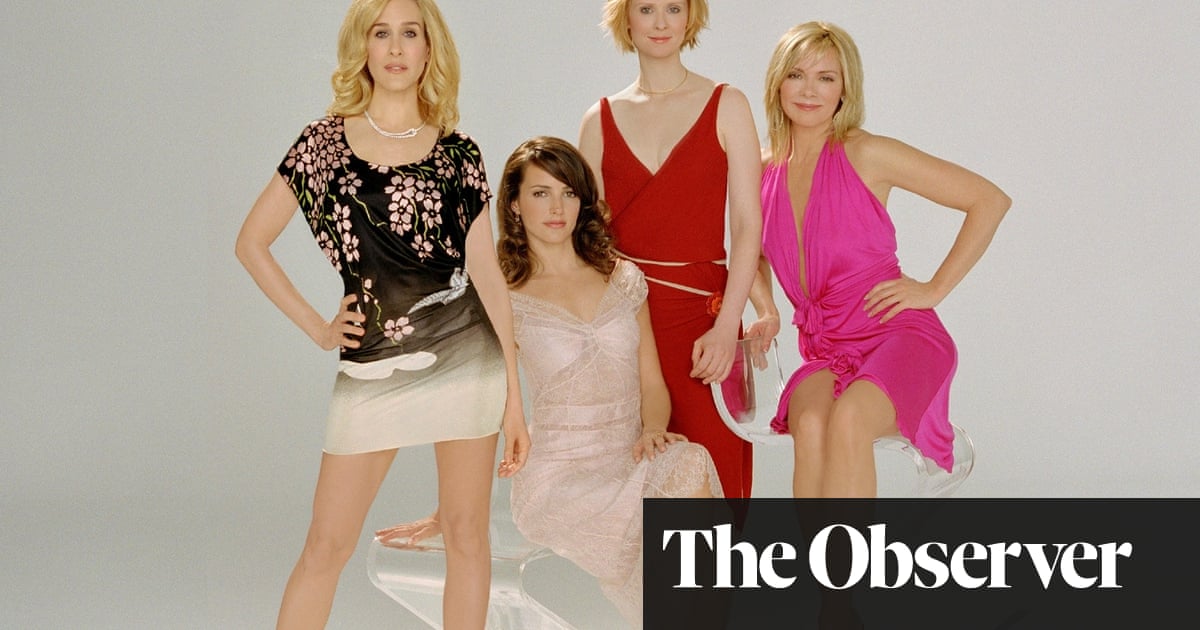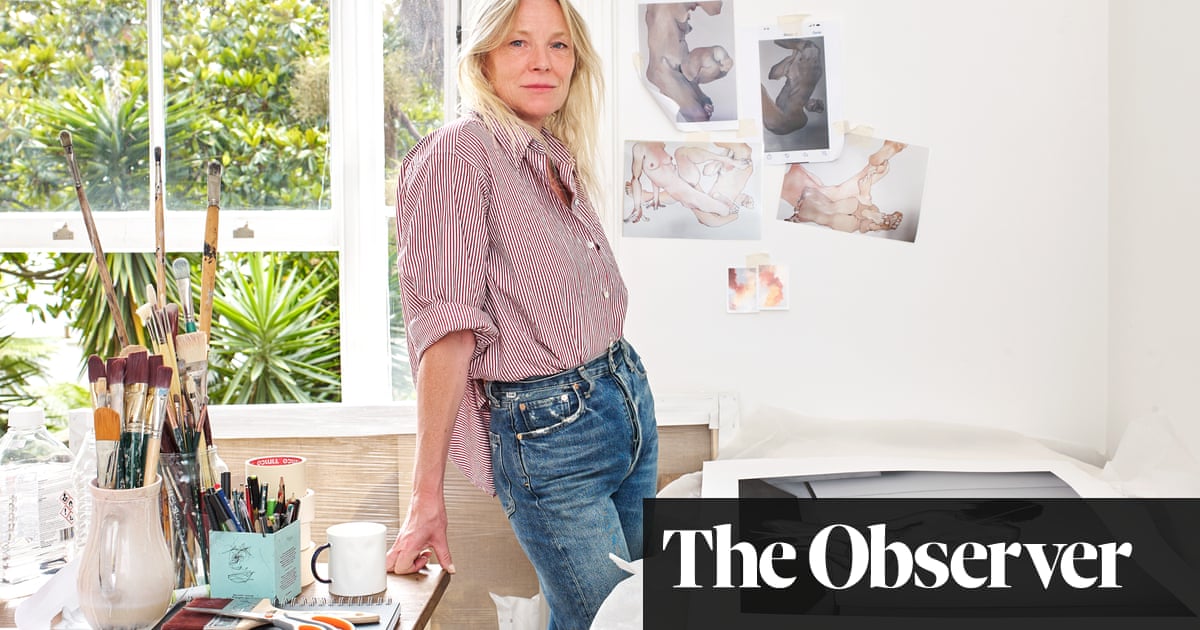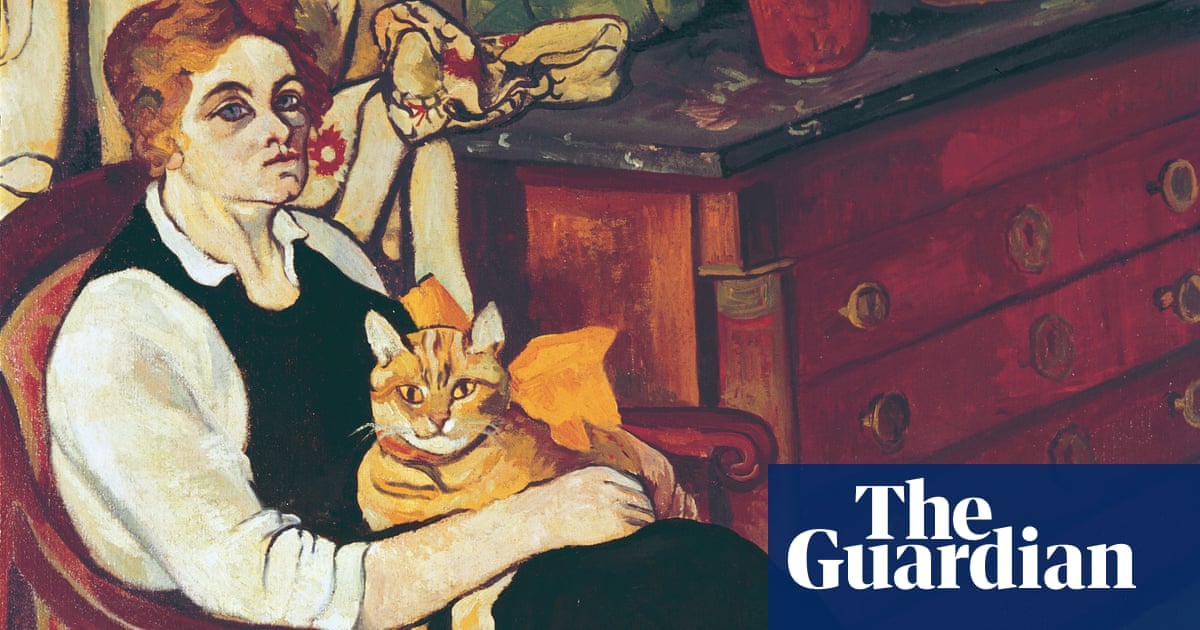
When Tracey Emin’s cat Docket went missing in 2002, the “Lost Cat” posters she pasted around her east London neighbourhood were pilfered and valued at £500. Her gallery, White Cube, argued that they didn’t count as works, though some art historians said otherwise. Whomever you believe, they still occasionally turn up on eBay.
It is Emin’s self-portrait with Docket that I love the most, however. (That and her handmade cat photo book, Because I Love Him, a dream art purchase should I ever make it rich.) In the photograph, Docket faces the camera with that deadpan, slightly morose expression that is particular to cats, his impressive whiskers shooting out beyond the artist’s fingers, which frame his face as she nuzzles him from above. It’s a strikingly maternal image, and indeed Emin has in the past referred to the cat, who has sadly now left this earthly plane, as her “baby”. It comes in a long line of artistic depictions of women or girls with cats.
Cats are almost as old a subject for visual art as art is itself – there are felines painted in the Lascaux cave. In antiquity, they graced ancient Egyptian tombs and the mosaics of Pompeii. The old, old association between cats and fertility, and their status as mother-goddesses from the ancient Egyptian Bastet to the Greek Hecate, means that women and cats have been seen as interlinked for millennia. So it’s no surprise that they have been so often paired together as a subject by everyone from Morisot to Picasso, Matisse to Kirchner, Kahlo to Freud. They pop up in annunciations by Rubens, Barocci and Lotto, representing femininity, domesticity and sometimes the devil – or what the Jungian psychologist Marie-Louise von Franz calls the “feminine shadow”, the dark side to the Virgin Mary, the mother of God.
It’s no surprise that cats appear so frequently in paintings: artists tend to love them, maybe because they are so defiant and independent. Plus, it is easier to paint while caring for a cat than a dog: they do not require walking, though they can still get in the way, as a gorgeous photograph of the painter Lois Mailou Jones standing at an easel with a kitten on her shoulder shows. Leonor Fini, meanwhile, kept two dozen cats, so it’s no surprise that their fur sometimes ended up melded with the paint on her canvases.
There are some fabulous photographs of Fini with her pets. In a 1961 portrait by Martine Franck, her wild dark hair is an eccentric counterpoint to the white cat’s refined appearance, while in another image she is shown wearing an evening gown as she kneels to feed six cats in her kitchen. Dora Maar’s image is perhaps the most deliberately erotic. Fini wears a sort of low-cut corset, and a long-haired black cat is held between her open legs in a visual pun that is not lost on the viewer.
As anyone who has owned one knows, cats are promiscuous and unfaithful, roaming the streets at night in ways that women historically could not, and in Japanese art cats and courtesans sometimes come hand in hand. One netsuke even shows two cats embodying the figures of sex worker and client. Maar, meanwhile, was a cat woman herself, and when Picasso painted his lover with a black cat on her shoulder, it could be read as a symbol of her sexual, passionate self. Their relationship was tempestuous, and Maar’s clawlike hands, to me at least, seem to allude to those of a cat.
I used these images as a sort of visual mood board while I wrote my memoir, The Year of the Cat, which is about how adopting a cat made me think differently about motherhood, but also has a strong art-historical line running through it on the theme of female artists and their cats. One of the first paintings I saw of a woman with a cat was at school, by the artist Gwen John. In Girl with a Cat (1918-22), the subject sits with a black cat nestled in her arms. The young woman gazes off into the distance, her expression almost desperately sad. The cat, meanwhile, gazes directly at the viewer with yellow eyes. John loved her cat, Tiger, and when he went missing, she slept outside in the hope of tempting him home; like Emin’s Docket almost a century later, he did eventually return. The love that John felt for her cat, when she was so unhappy in love of the more human variety, has moved me ever since.
Two of Picasso’s earlier pictures of women and cats have a similar emotional effect. In his 1900 Woman with Cat, the subject bends forward in her bed towards the small cat that she holds in her arms, as though trying to take solace in it. Meanwhile, his 1901 Nude with Cats, sometimes called Madwoman with Cats, feels to me merciless in its depiction of its vulnerable subject. In my book, I look at the myth of the “crazy cat lady”, which has its origins in the fear of witchcraft, and how it has been used to stigmatise single and childless women. This image, painted in an asylum, felt too uncomfortable to include, but I held it in my mind as I wrote.
Far more cheering are Suzanne Valadon’s cat paintings. Another cat lover – she used to feed them caviar – Valadon painted her cat Raminou several times, as well as other cats. Though she treats them with the respect due to a proper subject for a painting, there’s a playfulness in the way she conveys their stony expressions. She succeeds in capturing the daft haughtiness that is essentially the essence of cat. Her pictures of women with cats are even better, 1919’s Jeune Fille au Chat being my favourite, perhaps because the girl in it looks so happy to be holding the animal, while the animal itself appears to be merely tolerating the interaction, reminding me of my own cat Mackerel’s standoffish nature.
To see Valadon herself with her cat – in this case a white one – we must rely on Marcel Leprin’s painting of her, in which she wears a formidable expression. She may not have claws, but much like the animals she so loved, Valadon, a laundry maid’s daughter who astonished Degas with her talent when she showed him her drawings, was rebellious and not to be trifled with – a far cry from the demure dancer she played when modelling for Renoir.
That male artists should use cats as a means of eroticising the objectified female nude will come as a surprise to no one. In Félix Vallotton’s La Paresse, a naked woman is sprawled on a bed, her hand extended to stroke the cat. In a Masaya Nakamura photograph, we see only the curve of her backside and her pointed feet as a black cat gazes in the direction of her genitals. I’d far rather Pierre Bonnard’s more humane depiction of an irritated-looking woman, sitting fully dressed at the table with a plate of food while the “demanding cat” of its title harasses her. Or even better, Lotte Laserstein’s 1928 Self-Portrait with a Cat, wherein her head-on gaze appears to challenge the viewer as the disgruntled-looking animal she holds in her lap seems ready to pounce if necessary. It’s as though they are both daring you to say something: call Laserstein a crazy cat lady at your peril.
You could say that cats and artists have something in common: both groups have historically maligned and refused to adhere to the rules that society attempts to impose upon them. Women artists have, of course, been especially marginalised, and how one might go about juggling a creative career with motherhood remains a perennial question, one of the many I pose in my book. Emin, who does not have children, has said she would have resented leaving her studio for them if she had any. It would be rude to suggest that a cat can be a kind of surrogate child, had Emin not made this explicit herself.
Centuries after the witch-hunts, the love that women – particularly childless women – have for cats is mocked and stigmatised to this day. That is why I take such delight in the photographs of Brooke Hummer, who asked various cat women to pose in the style of historical paintings, their styles ranging from 19th-century colonial to surrealist. These funny, celebratory images subvert the shaming stereotype of the cat lady. My favourite is a pastiche of a medieval painting of the Madonna and child, but instead of a baby, the Virgin Mary holds a tabby cat. Laugh if you like, she appears to be saying, but cat love is real love.
Rhiannon Lucy Cosslett’s The Year of the Cat is published by Headline on 19 January, price £18.99




